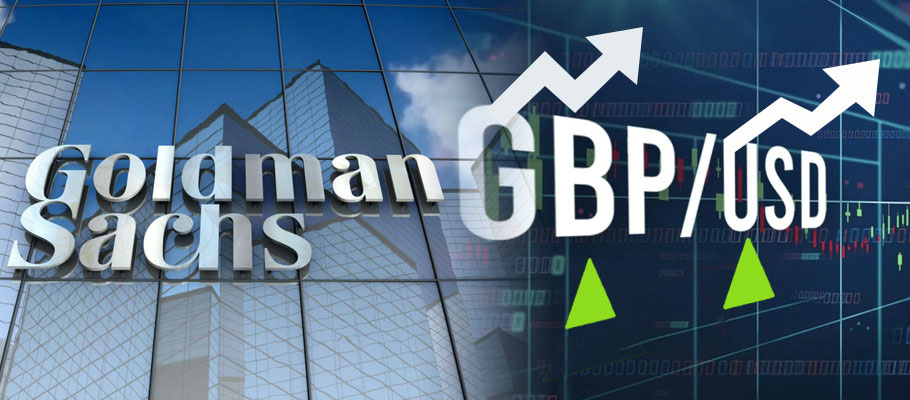
Published: November 20th, 2024
Analysts at Goldman Sachs are calling the British Pound a potential ‘hidden gem’ in their latest year-ahead forecast. Published on Monday, November 19th, the Wall Street bank’s report lists a set of post-election targets pointing to solid gains for Sterling in the coming months.
Pointing to GBP’s ‘bullish set-up,’ Goldman says the Pound ‘should keep pace with a broader appreciation in the Dollar.’ Given Goldman Sachs’ central position in the global financial architecture, the bank’s outlook could affect how traders set their expectations of the forex market in the coming months and prepare rational trading strategies for what could be a volatile 12 months.
One prediction in the year-ahead forecast is for the Pound to Euro exchange rate to rise well above 1.20. 'We have maintained a constructive view of GBP over much of 2024, and we believe the rationale is still there for ongoing outperformance by Sterling on G10 crosses over the next few months.’
Goldman’s report lands in the aftermath of Donald Trump's US presidential election victory, which also saw his Republican Party win majorities in both houses of Congress.
Trump 2.0 looks ready to shake up global trade while strengthening America’s economy, a scenario which would keep US interest rates ‘higher for longer’ than other major currencies.
Any new US import tariffs could hit the Eurozone's all-important exports hard, while higher Fed rates would ultimately mean gains for the Greenback.
‘We see that as a powerful supportive mix for the Dollar,’ Goldman’s report adds. ‘As a result, we are no longer looking for broad depreciation by USD, even on a six or twelve-month timescale. We see USD staying stronger for longer.’
In August, the Pound faced down an extended selloff against a backdrop of sinking global stock markets and worries that the US economy was faltering.
The Pound to Euro rate dropped 0.60 per cent on 21st August after the Bank of England (BoE) cut interest rates by 25 basis points. US equities markets fell the day after as earnings from big technology companies came in well below expectation.
A research note from Capital Economics said those factors created additional selling pressures in the Asian session, when Japan’s Nikkei 225 index fell by more than over five per cent. ‘In our view, such a steep and sudden decline points to a wider bout of global risk aversion.’
Risk-averse sentiment can negatively impact Sterling, which was already feeling the pressure after the Bank of England made its rate cut. The Pound to Euro conversion fell below 1.18 on Tuesday 6th August to touch 1.1773, a level last seen in early July.
Historically, GBP tends to lose value against USD, EUR, CHF and Yen when market sentiment turns gloomy. It can also gain against 'high beta' currencies like the Norwegian Krone and the Australian and New Zealand dollars.
‘Stock markets fell globally as fear trading took over in advance of the crucial US job print,’ wrote Capital Economics’ analysts. ‘Many sectors are experiencing a selloff, with tech firms suffering worst after investors punished Intel, Amazon, Apple and others for poor earnings.’
In April, The GBP/EUR exchange rate moved to the 1.17 threshold following publication of GDP figures showing Britian’s UK economy grew 0.1 per cent month-on-month in February 2024, while an upward revision to January's figure (from 0.2. per cent to 0.3 per cent) added to the good news.
The combined numbers from the Office of National Statistics (ONS) effectively guarantee that the quarterly figure will indicate a return to growth, ending the low-level recession seen in the second half of 2023. A Q1 contraction would mean that UK GDP declined by a full percentage point in March, something economists see as highly unlikely.
Sterling was up against most of its peers at mid-month, though the Pound to Dollar rate struggled to get beyond 1.2537 thanks to a broader Greenback rally driven by the release of strong US inflation and labor market prints.
Production output drove the majority of UK growth in February, expanding by 1.1 per cent. The UK’s large services sector grew by 0.1 per cent in February and by 0.3 per cent in January.
Analysts said any upside potential from the GDP figures could be hemmed in by the relatively small advance in the figures, which aren’t big enough to significantly stimulate inflation.
The month prior, Sterling started the second week of March 2024 softer following publication of a UK job market survey by global consultancy KPMG that confirmed a previous slowdown in wage increases had become bedded-in.
The survey revealed that the rate of salary inflation for permanent job placements had sunk to a three-year low. An index of permanent staff salaries dropped to 55.1 in February from 55.7 in January. For comparison, the index averaged 60.0 from 2015-2020.
The news sent the Pound to Euro exchange rate down from 1.1749 to 1.1729 as GBP shed some gains after ending the previous week on a strong footing.
Pantheon Macroeconomics told Bloomberg that the KPMG figures were highly credible given that its survey methodology has a 25-year track record of capturing shifts in wage growth. ‘The latest survey results suggest that Bank of England policymakers need to cut interest rates soon.’
While Sterling may have settled back naturally after experiencing a late advance last week, the KPMG survey confirmed the official ONS wage report, which also showed that UK wage increases had cooled significantly, opening the door for Threadneedle Street to cut interest rates in the coming months.
Given the back-to-back findings, forex traders began de-risking GBP positions. The Pound to Dollar exchange rate fell back on Monday, 11 March to 1.2840 after reaching a seven-month high of 1.2893 last Friday.
The survey did note some increases in starting pay rates as employers reacted to rising cost of living and competition for top candidates. However, the rate of salary inflation was the slowest tracked in over three years.